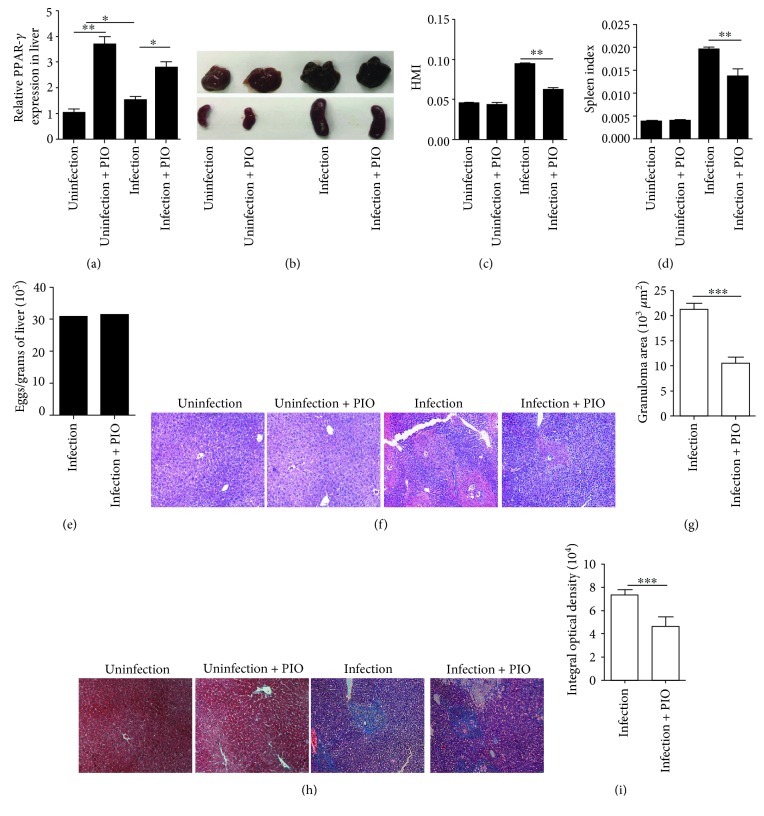Figure 1.
The role of the PPAR-γ agonist in hepatic and splenic pathologies. (a) The mRNA level of PPAR-γ in the liver of mice in each group after continuous intragastric administration with pioglitazone for 5 weeks. Data are expressed as the mean ± SD of 6 mice for each group. (b–d) Hepatic mass index (HMI) and spleen index were calculated by the ratio of the liver or the spleen weight to the body weight, respectively. (e) The numbers of eggs extracted from the liver (1 gram) in each mice were determined by microscopic examination. (f, h) Paraffin-embedded liver sections stained with H&E or Masson; original magnification, ×100. (g) For each mouse, the sizes of 20 liver granulomas around single eggs were quantified with AxioVision Rel 4.7. Paraffin-embedded sections were stained with Masson; original magnification, ×100; (i) the mean optical density of collagen fibers by Masson staining was digitized and analyzed on Image Pro Plus software. Data are expressed as the mean ± SD of 12 mice for each group, which resulted from two independent experiments. ∗P < 0.05, ∗∗P < 0.01, and ∗∗∗P < 0.001 (ANOVA/LSD).

